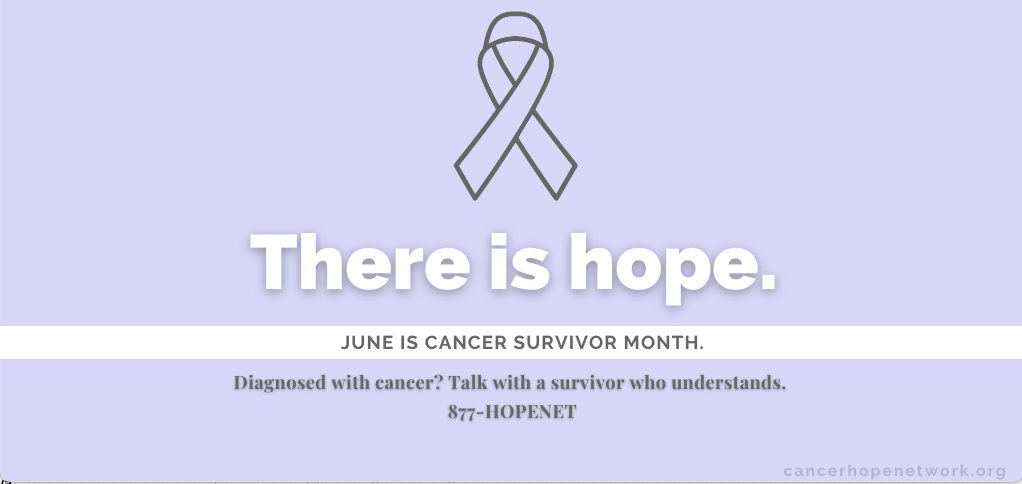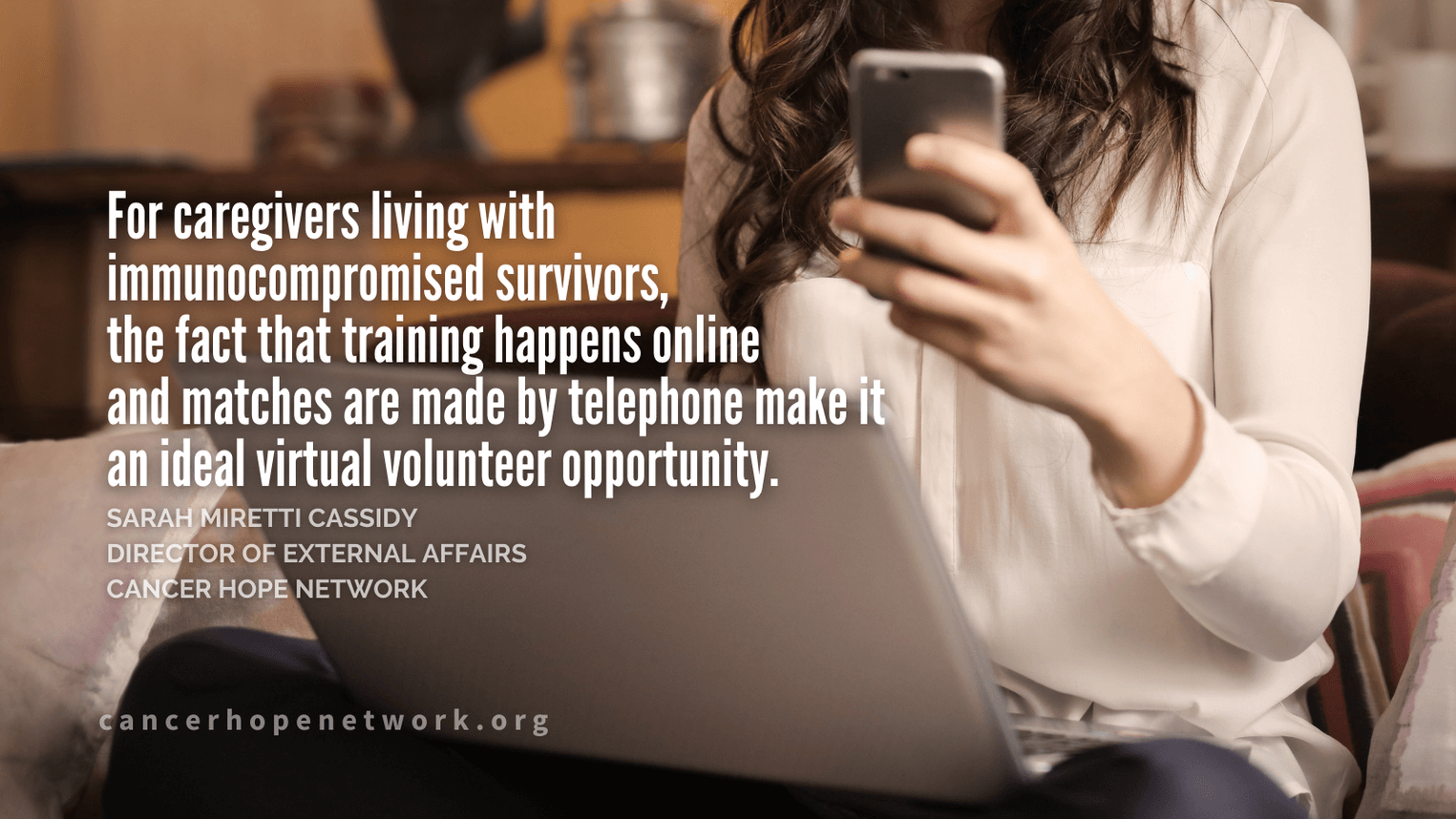Article
Volunteer Rounds: Managing Worry During A Cancer Journey
Author(s):
Lessons from Dale Carnegie, applied to 2021 cancer fights.
“Where do you sit on the worry scale? How much added stress can you handle? On a scale of 1-100, many of us fall in the 50-60 range every day. Now add cancer.”
With that, Greg Blake, who has spent the past semester interning with Cancer Hope Network as part of his masters’ coursework, kicked off the discussion for the latest Volunteer Roundtable.
Greg spent his first career as an institutional bond salesman for one of the largest capital bank market groups in the nation. After losing his wife to pancreatic cancer, the Wharton grad returned to his beloved alma mater to obtain his graduate degree in Mental Health Counseling, hoping to help others navigate the challenges of cancer. Using the tenets of Dale Carnegie’s “How to Stop Worrying and Start Living,” Greg led a robust discussion focused on three worry remedies. Survivor and caregiver participants shared their thoughts and opinions on the application of these tenets through the lens of their personal experiences managing worry and stress while facing the unique complications of cancer. The conversation focused on the following:
Analyze your worry. Take action. Repeat as necessary.
Clear, definite decisions can reduce worry and mitigate distress. Following the guidelines set out by Mr. Carnegie so many years ago, the group walked through the analytic phase of worry minimization with two questions: “What am I worried about? What can I do about it?”
For a client facing cancer, finding questions is often the easy part. The moments after a diagnosis are a whirlwind – with each question bringing new ones to the surface: Am I going to live? What if the next appointment includes worse news? What if treatment fails? Who will take care of my family while I’m sick?
These questions can feel isolating and scary. But, it is important to know that you are not alone. CHN Support Volunteers have been through the whirlwind and can help with the second, critical portion of the remedy: planning practical action - how to go about getting a second opinion, creating a list of questions to ask at appointments, how to cope with information overload, navigating seemingly endless appointments. We’re here with resources with practical help about working through treatment from our friends at Cancer + Careers and information about insurance and organizing and updating important medical or legal paperwork from our colleagues at Triage Cancer. “The more specific the possible solution, the less your brain is panicking and is able to focus on solutions.” Picking a path – even if it’s wrong! – helps stop the “particle accelerator” of worry.
Accept the worst and then work to improve it.
This strategy kicked off heartfelt discussion amongst the survivors and caregivers who joined the call. The group acknowledged the significant challenges of applying this step to cancer. Sometimes our worries are a bit more pedestrian like having to figure out the kids’ carpool, how to complete a project at the office on time, or how information you shared at a recent meeting was received by the audience. Other times, our worries are more serious and include concerns about money, relationships, or long-term security. In these cases, this step may seem challenging, but also practical. These situations are worrisome—scary even—but, for the most part, they are not a matter of life or death.
But a cancer diagnosis – possibly a terminal one makes accepting the worst much more daunting, even temporarily debilitating. But, while cancer changes the equation, it does not change the underlying validity of this strategy.
The approaches were as varied as the personal experiences represented, but one thing was clear. As in so many situations, honesty with self and those around us, is crucial. In this case, that can mean recognizing the painful reality of coming loss and having difficult conversations with those we love.
“Don’t hide from your diagnosis,” suggests 22-year brain cancer survivor Tom. “Talk about it and let people know what you think and feel and what YOU need. If you put words to it, it’s no bigger than that.”
For some patients and loved ones, “working to improve the situation” means searching for clinical trials and new treatments. For others who are facing a reality where treatment won’t make a difference, it means finding the best ways to maximize their quality of life – from fulfilling bucket list wishes to having important conversations about advanced directives and estate planning. But for all, honest, open conversations have been helpful.
“As volunteers, we are teaching clients that they’re in charge,” said ovarian cancer survivor Laura. “We’re helping them advocate for what’s important to them.”
Live in day tight compartments
For others, this strategy may be most useful. With “day tight” compartments, each day begins anew – with an absolute focus on the present. Popularized by Carnegie, this strategy is built on a quote from Thomas Carlisle, “It is not our goal to see what lies dimly in the distance but to do what clearly lies at hand.”
For many years bulkheads, a dividing wall or barrier, kept ships afloat, blocking floods from overwhelming all areas of a ship. When worry begins to overwhelm, closing the “mental bulkhead” against guilt over past decisions and worry about future complications can create “a dry place” to focus and process.
For cancer patients, that may mean focusing on a single chemo appointment, as Julie did. (“Don’t view it as 12 chemos. View it as one chemo at a time. Break it up into little tasks. If you look at 12, it’s too much”) For caregivers like Marlys, it meant choosing happiness as she and her husband wrung everything out of their final decade together. (“You might be surprised at how counting what remains—instead of counting what was lost—made a huge difference on the happiness meter.”)
“Don’t lose your todays worrying about tomorrow.”
We hope these tips are helpful to you as you work through the worry cancer inevitably brings. Our trained survivor and caregiver volunteers are here to help. Request a free and confidential match conversation today – visit cancerhopenetwork.org or call 877.467.3638 (877-HOPENET)
Author’s note: At Cancer Hope Network, we’re committed to helping people navigate difficult conversations. This session of Volunteer Rounds was challenging for me personally. The presentation and discussion addressed important, difficult topics. Intellectually, I know it’s vital to have conversations with loved ones who are nearing the end of their life. Professionally, I’ve done a lot of research and have talked to/helped others prepare for and navigate those talks. I’m a champion of honesty and directness. But no knowledge, no research made it easier when it was *my* loved one facing hospice or when the talk about time versus quality of life was happening at a kitchen table where I’ve spent hours laughing and talking.
We each approach worry and illness in different ways. I hope that the conversation reflected below is helpful to you as you find the structure that works best for you. No matter how you choose to address worry, please know that our Programs Team and Support Volunteers are here to help.



